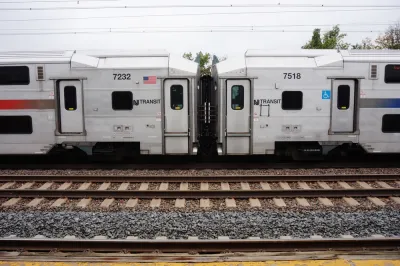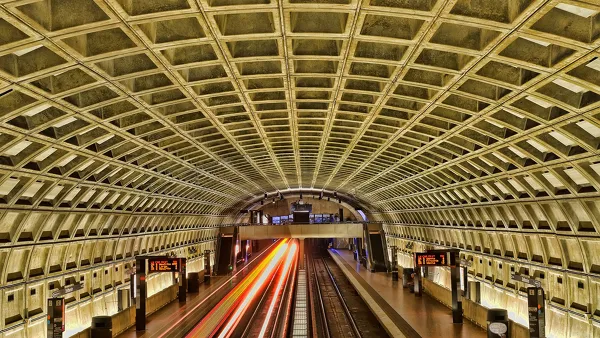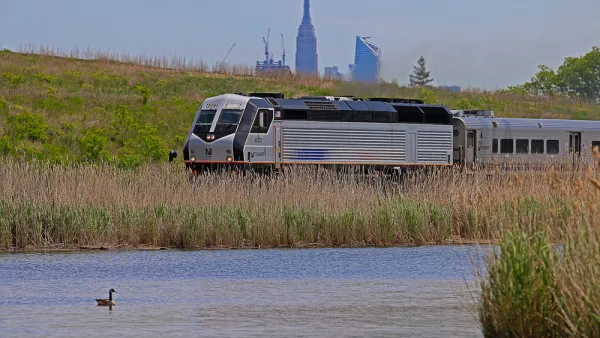The sharp historic division between commuter rail and other forms of transit has limited the ability of regional rail systems to serve more users.

Designed to serve suburban commuters, many of the country's regional rail systems don't provide efficient enough service to lure commuters out of their private vehicles, writes Jake Blumgart for Governing. "In recent decades, the vast web of rail lines that surround many older urban centers were only convenient if you worked a 9-to-5 job downtown." The stark division between "regular" transit and commuter rail in the minds of many transportation officials has left many workers with less traditional schedules without effective transit options.
"There are not such sharp contrasts between regional rail and the rest of transit systems in most wealthy European or East Asian nations. But in North America, the divide was sacrosanct. As recently as 2016, then-MBTA General Manager Frank DePaola drew a bright line between this service and the rest of the agency’s subway, bus, and light rail services: 'Commuter rail is commuter rail. It’s not transit. It’s designed to bring people into the city in the morning and take them home at night.'"
But the sharp drop in ridership during the last year has highlighted the problem with this mindset. After "commuter rail lines took a ridership hit of unprecedented magnitude," workers are slowly returning to their commutes, but "even those who go back to the office are anticipating that they will have more flexible scheduling and work-from-home opportunities a day or two a week." This means that "[i]f commuter systems try to return to their focus on white-collar suburban commuters, their ridership will be considerably thinned. To continue to attract riders and fares, they will need to change their appeal. To do that, they will need to change their frequencies and their fares."
FULL STORY: Taking the ‘Commuter’ Out of America’s Rail Systems

National Parks Layoffs Will Cause Communities to Lose Billions
Thousands of essential park workers were laid off this week, just before the busy spring break season.

Retro-silient?: America’s First “Eco-burb,” The Woodlands Turns 50
A master-planned community north of Houston offers lessons on green infrastructure and resilient design, but falls short of its founder’s lofty affordability and walkability goals.

Delivering for America Plan Will Downgrade Mail Service in at Least 49.5 Percent of Zip Codes
Republican and Democrat lawmakers criticize the plan for its disproportionate negative impact on rural communities.

Test News Post 1
This is a summary

Test News Headline 46
Test for the image on the front page.

Balancing Bombs and Butterflies: How the National Guard Protects a Rare Species
The National Guard at Fort Indiantown Gap uses GIS technology and land management strategies to balance military training with conservation efforts, ensuring the survival of the rare eastern regal fritillary butterfly.
Urban Design for Planners 1: Software Tools
This six-course series explores essential urban design concepts using open source software and equips planners with the tools they need to participate fully in the urban design process.
Planning for Universal Design
Learn the tools for implementing Universal Design in planning regulations.
EMC Planning Group, Inc.
Planetizen
Planetizen
Mpact (formerly Rail~Volution)
Great Falls Development Authority, Inc.
HUDs Office of Policy Development and Research
NYU Wagner Graduate School of Public Service





























